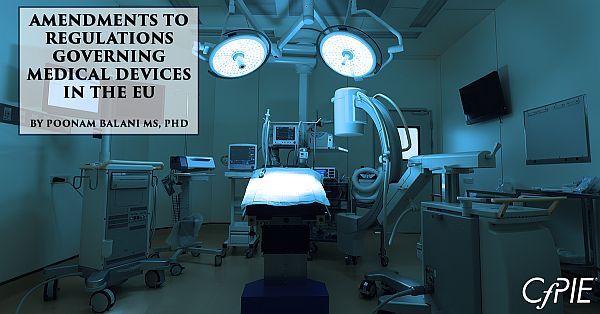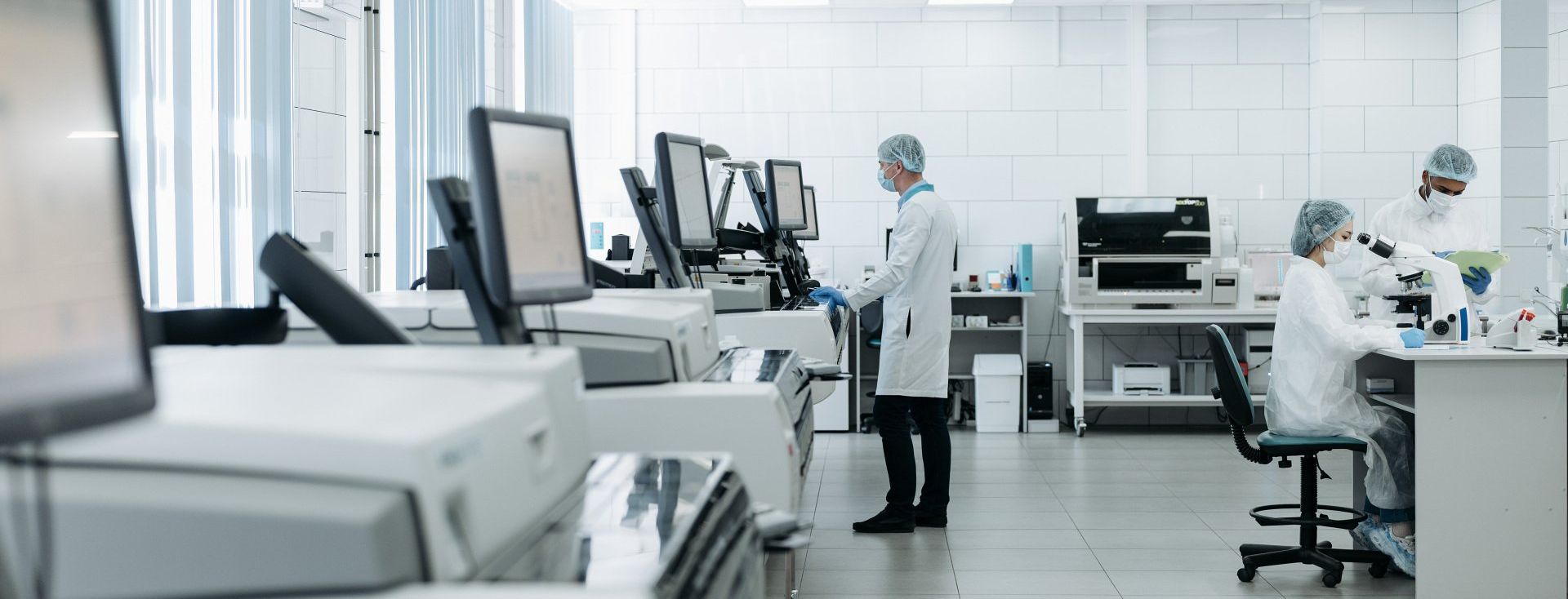Amendments to Regulations Governing Medical Devices in the EU
In a tripartite negotiations, the European Commission, EU Parliament and Council have agreed on a draft regulation regarding the proposed regulatory framework for medical devices and in-vitro diagnostics
This EU regulation is drafted with the purpose of smooth functioning of the medical devices market within the EU, with the aim of ensuring greater health protection for patients and especially considering the needs of the small and medium sized enterprises (SMEs) in the medical device sector. The draft regulation also sets higher standards for quality and safety for medical devices and also harmonizes the regulations governing the free movement of goods for medical accessories.
Proposed changes to the existing regulation
Several areas have been highlighted for an increased scrutiny. These include the notified bodies, post market surveillance and clinical investigations. The new proposals for draft regulation for medical devices and in-vitro diagnostics carry extensive details as well as an introduction of a European database medical devices and in-vitro diagnostics to facilitate transparency and effective communication between the manufacturers and operators of medical devices, notified bodies, member states and the European Commission.
The European Databank on medical devices (Eudamed) will integrate the data on information on the registration of the products with a Unique Device Identification Number (UDI). The UDI will enable increased traceability while improving the management of available stocks and waste disposal policies. The Council has taken particular care and taken special steps to ensure the implementation of the traceability and identification rules in practice. The Europe wide database shall also be integrated for economic operators and information collection.
This would enable the assessment for conformity of procedures, certificates, reporting incidents and clinical studies. The primary objective of the database is to improve the transparency and provide better access to information for healthcare professionals as well as general public. The central database is also expected to streamline information sharing between member states of the EU and the EC and would avoid uncalled for duplication and multiple reporting.
What it mean for the notified bodies
Under the council's approach, notified bodies will have to undergo a stricter designation process and increased monitoring by the authorities. Furthermore, it will be obligatory for the notified bodies to employ clinical experts and medical doctors. Notified bodies will also have to implement a rotation system for their lead auditors in surveillance audits. Additionally, notified bodies would be given the authority to "carry out unannounced factory inspections" at least once every five years, to establish continuous compliance to the regulatory requirements and the manufacturer’s quality management system.
Implications for manufacturers
Once the regulation comes into effect in the first quarter of this year, the manufacturers are expected to face increased post market surveillance requirements. Manufacturers will have to establish a post market surveillance system that is "proportionate to the risk class and appropriate for the type of device." Involved enterprises will also have to submit periodic safety update reports (PSURs) on an annual basis. Under the new regulations, the manufacturers will have to have a faster response time in an event of serious public health threats or deaths caused by devices.
One key category affected is the software which is intended to gather data which is later used for a diagnostic decision or therapeutics. Such software shall be classified as class IIa. If such decisions can result in direct or indirect death or deterioration in health, the software has to be classified into category III (highest risk), even though it may not be a part of a class III medical device.
In the amendments to the EU regulation on medical devices, the risk management system, the vigilance system and the post market surveillance system are clearly postulated as integral parts of the quality management system. Manufacturers will be required to employ a person who is responsible for regulatory compliance. The manufacturers will also have to conclude a liability insurance agreement so as to financially cover the damages occurred due to faulty products.
Greater protection to patients
The final regulation has been amended to include greater protections for patients involved in the trials and clinical investigations for medical devices. In order to demonstrate conformity, companies will have to prove that the devices have an acceptable benefit to risk ratio. Product safety and performance of high-risk devices will have to be established by conducting clinical investigations. The amendments will include a provision for the manufacturers of class III (highest risk) devices to consult with an expert panel. This panel will provide a feedback on the company's clinical investigation strategy. The regulation also lays down the criteria and restrictions on the types of clinical investigations to be conducted. Individual member states in the EU will have the final say on any further restricts of certain practices within the scope of a clinical investigation.
[1] https://ec.europa.eu/growth/sectors/medical-devices/regulatory-framework/revision_en
[2] https://ec.europa.eu/growth/tools-databases/newsroom/cf/itemdetail.cfm?item_id=8863&lang=en
Blog Categories
Stay Informed
Have Questions?
You will be able to find answers to most frequently asked questions here
Since 2001 CfPIE has
Check Out Our Life Science Training Courses.
Need help finding the right life sciences training courses? We can help you make the right choice based on your company's needs.
- AMDE, PK/TK & Drug Metabolism in Drug Discovery and Development
- Advanced Topics in Biostatistics for Non-Statisticians
- Analytical Chemistry Principles for Pharmaceutical Scientists
- Analytical Method Validation for Biologics, Biopharmaceuticals and Other Therapeutic Products
- Aseptic Processing in the Manufacture of Biotech and Pharmaceutical Products
- Auditing and Qualifying Suppliers and Vendors
- Best Practices for an Effective Cleaning Validation Program
- Biostatistics for Non-Statisticians
- CMC Regulatory Compliance Strategy for Cell & Gene Therapy Medicines
- CMC Regulatory Compliance Strategy for Recombinant Proteins, Monoclonal Antibodies, & Biosimilars
- Cell and Gene Therapy Product Lifecycle - Introduction Course - Gene Editing, CRISPR/Cas, TALEN Technologies
- Change Control - GMP Requirements and FDA Enforcement
- Cleanroom Fundamentals - Regulation, Science, Design, Practice, Operation & Management
- Clinical Document Management: A Trial-by-Trial Compliance Approach
- Clinical Trial Project Management, Phase 1-4 Best Practices
- Comprehensive Overview of FDA Regulatory Compliance for Drug and Biotech Products
- Computer System Validation
- CRO, CDMO and Non-Clinical Vendor Management Fundamentals
- Development and Validation of Bioanalytical Assays for Biologics: Quantification (PK) and Immunogenicity Assays
- Effective Document Management for Pharma, Biotech & Medical Device
- Effective Internal and External Quality Assurance Auditing for FDA Regulated Industries
- Ethics in Research - Values for Responsible Conduct of Research
- European Regulatory Procedures - EMA & National Requirements
- FDA Inspections - What Regulators Expect and How to Prepare
- GCP Audits - Best Practices for Ensuring Compliance & Detecting Fraud and Misconduct in Clinical Trials
- GMP Training for the QC Laboratory
- Good Clinical Practices (GCP) & Risk Based Monitoring - Understanding and Implementing Current Global Requirements
- Good Laboratory Practice (GLP) for Nonclinical Laboratory Studies
- Good Manufacturing Practices Training | GMP Course
- Human Error Prevention (HEP) - Risk Factors and Strategies
- Implementing and FDA Compliant Stability Program
- Integration of Risk Management Principles and Activities into the Pharmaceutical Quality System
- Intro to Medical Device Submission - 510(s)s, PMAs & Exemptions
- Introduction to Medical Combination Products
- Introduction to Statistical Analysis of Laboratory Data
- Introduction to Vaccines - CMC Regulatory and Quality Aspects
- Laboratory Equipment Validation and Qualification
- Lyophilization Technology - Application of Scientific Principles
- Marketing & Advertising of Pharmaceutical & Medical Devices
- Medical Device Process Validation Training for Professionals
- Medical Devices: Developing Effective Post Market Surveillance and Compliant Handling Systems
- Molecular Biology Techniques - Applications in the Biotechnology and Pharmaceutical Industries
- OTC Drug and Personal Care Product GMP & FDA Regulation
- Oncology Drug Development Course - A Comprehensive Overview
- Overview of FDA Regulatory Compliance for Medical Devices
- Overview of the New EU Medical Devices Regulations: MDR, IVDR, CE Mark and Compliance, QMS Fundamentals
- Pharmaceutical Root Cause Analysis of Failures & Deviations - Developing an Effective CAPA Strategy
- Preparation of FDA Submissions and Communicating with the FDA
- Preparing the CMC Section for NDAs/INDs/CTDs
- Process Validation for Drugs and Biologics
- QbD - Product & Process Optimization using Design of Experiments
- Quality Assurance/Quality Control for Biologics and Biopharmaceuticals
- RNA Biotechnology - An Introductory Course
- Specifications for APIs & Pharmaceutical Drug Products
- Technical Writing for Pharma, Biotech and Med Devices
- The Drug Development Process from Concept to Market
- US Medical Device & Quality Systems Regulations - Design Controls & Validation
- Writing Effective SOP and Other Process Documents
ABOUT US
The Center for Professional Innovation and Education (CfPIE) provides technical training for Pharmaceutical, Biotech, Medical Device and Skin/Cosmetics professionals. CfPIE offers more than 350 class sessions annually across 80 course titles in multiple formats, such as classroom, on-site, and certification programs.
USEFUL LINKS
STAY INFORMED
Your privacy and trust are important to us. We collect your information only for operational and advisory purposes. We do not and will not sell your private information to a 3rd party. By agreeing to this policy, you are giving us permission to contact you about our services and courses.
All Rights Reserved | CfPIE Inc. | Our courses and materials are copyrighted by CfPIE, Inc. and may not be used or reproduced without the written permission of CfPIE, Inc. management. | In partnership with CCC



